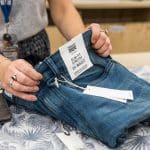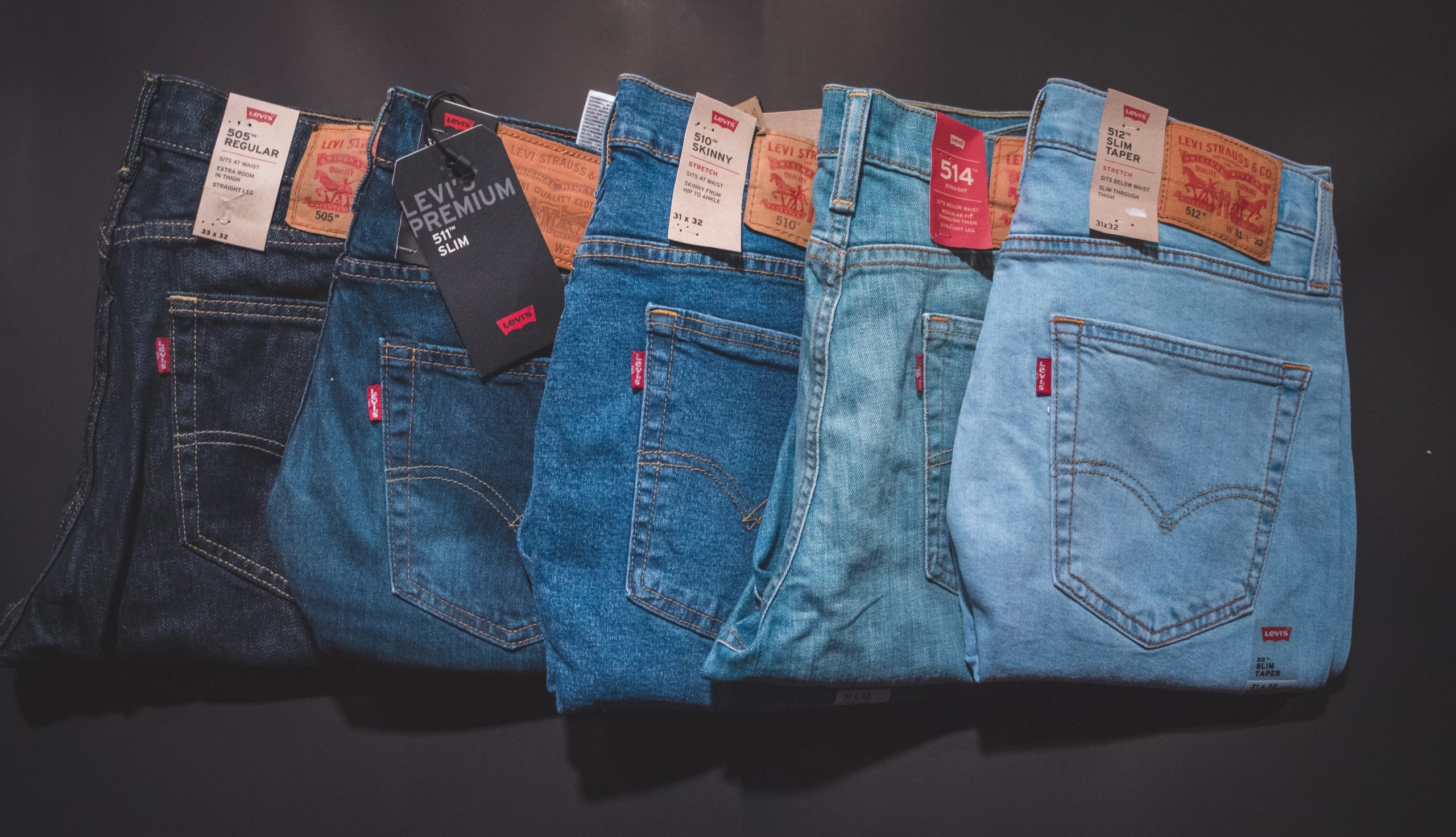College students from Japan in the 1950s started exploring the various stores at United States small military camps, where they had been exposed to American items plus culture, involving denim and other different fashions. This made Japanese love for denim since developing into a passion for worn, ancient denim. Big John (Maruo Clothing) decided to venture into the jean market, henceforth gaining the best-selling brand status in Japan in the 1970nce s.
From henceforth various other businesses started manufacturing jeans as well, hence Big John acquired more and more success it motivated various Japanese fashion companies to start making denim fabric in the country, instead of importing every item from other countries such as the United States. In the 1990s, high-end labels referred to as the Osaka 5 were started, making Osaka a level apart making it the capital of designer jeans.
A lot of fabric was woven for leisure inefficient machines until Toyota Motor Corporation started and set our attention into the future. Way before Toyota was producing the world’s best cars, they were making textile rolls with the Toyoda Automatic Loom Works. The company’s starter, Sakichi Toyoda, invented the Model G Automatic selvage loom comprising brand new creations like the potential to diversify shuttles without ceasing a range of other advancements that lead to a 20-fold rise in productivity in compared to the other looms being used at the moment. It could require some years before the machines could be used to create denim but for today they were very impressive in development toward what may lay ahead.
The high demand combined with the culture’s addiction and search for Excellency. This caused jean production to take off highly in Japan, especially in the town of Kojima situated in the Okayama Prefecture. Kojima always had become a hotbed for textile production. It only made sense to manufacture the first pair of jeans in Kojima at Kurabo Mills, one of the world’s oldest existing mills now running for more than 110 years.
These jeans were produced on those previously mentioned Toyoda machines from American-made denim under the Canton Brand by Maruo Clothing. In 1967, big john jeans were produced alongside Canton jeans and were made of denim from Cone Mills, the same mill that provided Levi’s with their unmistakable denim. While the jeans were successful, the Japanese still craved a pair made from their own selvage denim.
In the year 1972, after 8 tries, Kurabo managed to manufacture Japan’s first-ever selvage denim titled the KD-8, for Kurabo Denim 8. Today since all the pieces were in place for Japan to invent to the world what would eventually become a world phenomenon. One year later, in 1973, those pieces came together. The “M” series, made by BIG JOHN of Kurabo KD-8 jeans, became Japan’s 1st pair of denim made purely by their fellow countrymen. What followed was a revolution in jean manufacturing led by similar personnel that were at the forefront of the ancient craze.
Reasons why Japanese love denim Jeans.
1. The quality of the denim
From that time, denim from Japan has become recognized for mastering those 2 defining traits jeans were traditionally produced from being woven on an old loom to make selvage fabric and for employing natural dye. Assuredly not all Japanese denim is created evenly and there’s a lot of differences among various companies, manufacturers, and pairs of jeans. Still, denim fashion heads in Japan knew already the right value of a masterly made pair of jeans but it wasn’t till the rapid increase in leisure denim in the late 90s that’s when the other part of the world started to take notice of this quietly increasing art form.
One of the first on the top denim scene was Hidehiko Yamane, the founder of Evisu, who, along with creating some of the world’s first high-end denim, might have spread the usual misconception of Japanese denim producers purchasing the types of looms used to produce Levi’s since he himself owned one. Using the techniques of his predecessors, Yamane was able to make 14 pairs of selvage jeans a day on old looms along with handmade-painted seagull symbols which since have become iconic. Traditionally done as a homage to Levi’s classic 1944 501 xx, the label took off and acquired him a huge following among those in the streetwear scene. Evisu immediately gained the reputation of being the crème de la crème in denim and was also able to sell each pair for over $100 – the first denim brand to do so.
2. The denim are cost-friendly hence affordable.
The problem was, the Japanese adored jeans since they reminded them of such movies as “Rebel Without a Cause”, however, they were very costly for most of the young consumers who desired to purchase them. That aside, denim fans were by now accustomed to the soft, worn-in texture and colour of pre-worn jeans they had been buying as G.I. castoffs. So enthusiasts fans (at least those who could afford it) began to look for vintage jeans overseas, driving their price up to crazy levels.
Japanese fashion and retail businessmen saw the ability in this market and started creating Japan’s first domestic denim. Fast forward to the 21st century and Japanese jeans are termed as the best in the world. This shows, among other things, that when the Japanese choose to perfect a certain thing – be it American jeans, Italian pizza, Scottish whisky – they become the best.
Momotaro’s G001-T Gold brand jeans are maybe the pinnacle of denim artistry. Rated at roughly $2,000, the jeans are manufactured entirely by hand and dyed using natural indigo from the Indigofera tinctoria plant. This procedure goes against what the majority of denim heads search for in a pair of jeans in that the jeans do not fade since the dye penetrates the core of the cotton.
As a matter of fact, they usually become darker with age. Woven using the hand on a loom that used to weave Kimono silks, the denim itself takes to 8 hours for 3 feet of material. The fastening button is produced from silver with silk lines on the back of each pair. Once finished, the jeans are washed in Seto Seawater. Each pair can usually take up to a year to produce and even becomes a community function with locals included in each pair’s creation. A lot would scoff at the idea of paying $2,000 for a pair of jeans as denim enthusiasts find the price reasonable taking into account the years of tradition, training, craft, and skill included in making each unique pair.
3.The denim is of well recognizable fabric hence more durable.
Jeans and denim brands from Japan put much emphasis on quality other than other factors. Japanese denim manufacturers still employ a hands-on mechanism of production before machines would cut the fabric, usually hand dyeing. The material patterns are also usually cut using hands. Brands take this even further. A line of ancient-motivated jeans, Momotaro, uses denim woven by hands on the kind of wooden loom originally used to manufacture kimonos. The entire process will take one person three months to get it done, with a well-designed finished pair of jeans scaling for up to $2000.
While not all Japanese jean producers go to such processes, Japan is recognized for artisanal, high-end denim with committed attention to detail. Since they usually use machines from decades ago, and exercise vintage stitching approaches, holding their designs to a quality that is often not followed up in most Western countries.
The country still has a passion for vintage jeans, both original and imitation. This is a portion of the reason for employing vintage machines and approaches: the desire to remould a feel and appearance from years ago. However, there is still a market for authentic jeans that are as old as 70 years old and more.
4. Denim is means of cultural preservation in Japan.
Anciently worn denim has become a collector’s item in Japan, and Japanese people are enthusiasts now own about 70% of United States vintage jeans. Levis is the most favourite. These jeans are very known that pairs from the 1940s can still sell for more than $3000 in Japan. Specifically scarce Levis have been recognized to go for $40,000.
While high-quality labels are quite hard on the wallet, Japanese manufacturers still produce more price-friendly jeans that still match the high standards of quality. Specifically, in previous years, prices of Japan’s known selvedge jeans have reduced considerably, this makes them accessible for clients with lower budgets. And for the legit connoisseurs plus enthusiasts, Japanese labels have a lot of well-manufactured, unique denim on the market.
Japanese denim has a good reputation amongst denim lovers as being the best quality in the world and for quite good reasons. Although it doesn’t have much history, Japanese jeans are known for their high construction and the skilled, artisanal designs needed to manufacture them.
For one to understand well why Japanese denim is significantly better than other types of denim. We must first understand how denim is produced and what makes certain denim more favoured than others. When we keenly look closely at a pair of denim one will find out the weft or transverse threads maintain the white colour as do the inside of a pair of denim. Many types of denim produced now use a synthetic dye which is quite cheaper and contains fewer impurities than natural dye, while high-end denim usually employs traditional dye.
Another vital characteristic in denim’s standard is the material of cloth the denim is produced from. Selvage, from the statement “self-edge”, means the traditional end of a roll of material which, in the case made into a pair of jeans, avoids the unravelling of the material. The price of making selvage denim is quite expensive since it only can be woven at a width of 31″, almost half the width of non-selvage denim, and is woven on old looms in need of more technique and adeptness. This also leads to a tighter, heavier weave along with many imperfections.
The addition of all these traits provides each pair with a definitive composition that gets only more unique after time. Unique jeans lovers are known going months or even years before washing their pairs of jeans for the first time as the first wash creates the trait that fades and applies uniquely to each wearer.
In conclusion,
Japan’s addiction to reinventing the American jeans they crazed over led Japanese denim producers to become the world’s best in terms of knowledge and manufacturing. From then on it was only a matter of time before the other parts of the globe caught on to the craftwork behind Japanese denim. Even though it is usually difficult to search out the real origins of a pair of jeans, it’s good to do some searching before to ensure you get what you’re searching for. Classic labels are usually a sure bet, but there are many new ones too that have the same passion and respect for jean production as those that came earlier.





